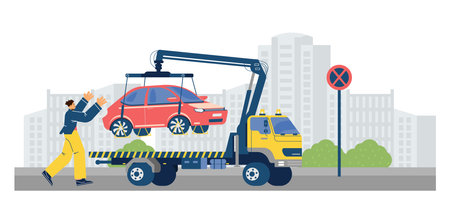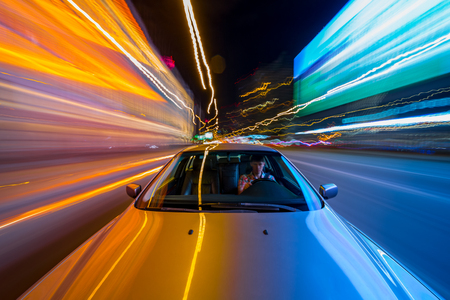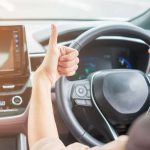1. Introduction to Self-Driving Cars
Self-driving cars, also known as autonomous vehicles, are transforming the future of urban transportation. These vehicles use a combination of sensors, cameras, radar, and artificial intelligence (AI) to navigate roads without human intervention. As technology advances, self-driving cars are becoming more sophisticated, promising safer and more efficient mobility options for city dwellers.
How Autonomous Vehicles Work
Autonomous vehicles rely on several key technologies to operate safely. These include:
- Sensors and Cameras: Detect objects, pedestrians, and obstacles in real-time.
- AI and Machine Learning: Analyze data to make driving decisions.
- GPS and Mapping Systems: Help the vehicle understand its location and navigate streets.
- Communication Systems: Allow vehicles to interact with traffic signals and other infrastructure.
Current State of Development
Self-driving cars are currently being developed and tested by major companies such as Tesla, Waymo, and General Motors. While fully autonomous vehicles (Level 5) are not yet widely available, many cars already have advanced driver-assistance systems (ADAS) that include features like adaptive cruise control and lane-keeping assist.
| Autonomy Level | Description | Example Features |
|---|---|---|
| Level 1 | Driver assistance | Adaptive cruise control |
| Level 2 | Partial automation | Lane centering, automatic braking |
| Level 3 | Conditional automation | Vehicle can drive itself in certain conditions |
| Level 4 | High automation | Fully autonomous but within specific areas |
| Level 5 | Full automation | No human driver needed in any condition |
The Road Ahead
As technology improves and regulations evolve, self-driving cars will become more integrated into urban transportation systems. Governments and companies are working together to ensure these vehicles are safe, reliable, and beneficial for public use.
2. Improving Traffic Efficiency
One of the most significant ways self-driving cars will transform urban transportation is by improving traffic flow. Unlike humans, autonomous vehicles can communicate with each other and make split-second decisions to optimize movement. This will help reduce congestion and minimize travel time for everyone on the road.
How Self-Driving Cars Optimize Traffic Flow
Traditional driving relies on human judgment, often leading to inconsistent speeds, sudden braking, and unnecessary delays. In contrast, self-driving cars can maintain steady speeds, follow optimal routes, and react more efficiently to traffic conditions. These capabilities contribute to a smoother and more predictable traffic system.
Reducing Congestion in Urban Areas
Traffic congestion is a major problem in many cities, leading to wasted time and increased fuel consumption. Autonomous vehicles can alleviate this issue by utilizing real-time data from sensors, GPS, and traffic management systems to anticipate and avoid gridlocked areas. Instead of reacting to traffic after getting stuck, self-driving cars can proactively choose better routes.
Minimizing Travel Time
By reducing congestion and optimizing traffic patterns, self-driving cars can help commuters reach their destinations faster. Whether through coordinated lane merging, efficient intersection management, or reduced stop-and-go driving, AI-driven cars eliminate inefficiencies caused by human behavior. The table below highlights key factors that contribute to quicker travel times:
| Factor | Impact on Travel Time |
|---|---|
| Optimized Route Planning | Reduces unnecessary detours and delays |
| Consistent Speed Maintenance | Minimizes sudden stops and slowdowns |
| Traffic Signal Coordination | Reduces wait times at intersections |
| Real-Time Traffic Data | Helps avoid congested areas and find faster routes |
The Future of Traffic Efficiency
As self-driving technology continues to evolve, urban transportation will become more fluid and efficient. With advanced AI systems managing vehicle movement, roadways will experience fewer delays, smoother traffic patterns, and shorter travel times—ultimately improving the overall driving experience for passengers and pedestrians alike.

3. Three, Enhancing Safety on the Roads
One of the greatest benefits of self-driving cars is their potential to significantly enhance road safety. Human error is the leading cause of traffic accidents, and autonomous vehicles have the capability to eliminate many of these risks. By relying on advanced sensors, predictive algorithms, and real-time data analysis, self-driving cars can react faster and more accurately than human drivers.
Reducing Human Errors
According to the National Highway Traffic Safety Administration (NHTSA), around 94% of traffic accidents are caused by human errors such as distracted driving, speeding, and impaired judgment. Autonomous vehicles aim to reduce these risks by ensuring precise control, consistent adherence to traffic rules, and eliminating distractions.
Comparison of Human vs. Autonomous Driving
| Human Drivers | Autonomous Vehicles |
|---|---|
| Prone to distractions (e.g., texting, eating) | Always focused on the road |
| Subject to fatigue and impaired judgment | Operates without fatigue |
| Reacts with possible delay | Responds instantly to hazards |
| May disregard traffic laws | Strictly follows regulations |
Improving Road Safety
Autonomous vehicles are equipped with sensors such as LiDAR, radar, and cameras that provide a 360-degree view of their surroundings. These technologies help identify potential hazards faster than human drivers and take preventive actions accordingly. Furthermore, self-driving cars communicate with each other and traffic infrastructure to optimize traffic flow and avoid collisions.
Emergency Response and Accident Prevention
Self-driving cars can evaluate real-time data to predict and prevent possible accidents. For example, if a pedestrian suddenly steps onto the road, an autonomous vehicle can apply the brakes instantly, reducing the risk of a collision. Additionally, in hazardous conditions such as heavy rain or fog, self-driving systems adjust their speed and driving patterns more effectively than human drivers.
Lowering Accident Rates
With fewer accidents, cities will experience a decline in injuries, fatalities, and property damage. This will not only improve public safety but also reduce the burden on emergency response systems and healthcare providers. Insurance costs may also decrease as accident rates drop, benefiting both individuals and businesses.
4. Impact on Public Transportation
Autonomous vehicles (AVs) are set to change the way we think about public transportation. While some believe they will complement existing transit systems, others worry they could disrupt them. The impact will depend on how cities and transportation companies integrate AVs into their networks.
How AVs Could Complement Public Transit
Self-driving cars and shuttles have the potential to improve public transportation by making it more efficient and accessible. Here are some ways AVs could enhance transit systems:
- First-Mile and Last-Mile Solutions: AVs could help passengers get to and from transit hubs, making public transportation more convenient.
- On-Demand Public Shuttles: Self-driving minibuses could adjust routes in real-time based on demand, reducing wait times.
- 24/7 Availability: Unlike traditional buses and trains that operate on fixed schedules, AVs could provide transportation late at night when regular services are limited.
Potential Disruptions to Existing Transit Systems
While AVs might improve accessibility, they could also negatively affect public transportation. Some possible disruptions include:
- Decrease in Public Transit Ridership: If AVs become a popular alternative, fewer people may use buses and subways, reducing funding for these services.
- Increased Traffic Congestion: If individuals prefer private AVs over public transportation, more vehicles on the road could lead to traffic problems.
- Job Losses: As AVs replace human-driven buses and taxis, many jobs in the transportation sector could be at risk.
Comparing AVs and Traditional Public Transit
To better understand how AVs might affect public transit, lets compare their strengths and weaknesses:
| Factor | Autonomous Vehicles | Traditional Public Transit |
|---|---|---|
| Convenience | Flexible, on-demand service | Fixed routes and schedules |
| Cost | May be expensive initially | Generally more affordable |
| Capacity | Limited passenger space | Can transport large numbers of people |
| Environmental Impact | Potential for lower emissions if shared | Lower emissions per person |
Integrating AVs with Public Transit
The key to making AVs a positive force in urban transportation is integration. Cities can adopt policies that encourage AVs to work alongside public transit rather than replacing it. For example:
- Developing AV ride-sharing programs that connect with train and bus stations.
- Using self-driving shuttles in areas where public transit is limited.
- Implementing regulations that prioritize shared AV rides over private AV ownership.
The Road Ahead
As autonomous technology evolves, cities must carefully plan how to include AVs in their transportation networks. By making strategic decisions now, urban areas can ensure that self-driving cars improve public transit rather than disrupt it.
5. Redefining Urban Infrastructure
As self-driving cars become more widespread, cities will need to adapt their infrastructure to accommodate this new technology. From road design to parking spaces and traffic management, urban areas must undergo significant changes to ensure a smooth transition to autonomous transportation.
Updating Road Design
Traditional roads were built with human drivers in mind, but self-driving cars operate differently. Cities may need to implement changes such as:
- Dedicated lanes for autonomous vehicles to improve efficiency and safety.
- Smart traffic signals that communicate with self-driving cars to optimize flow.
- Clearer lane markings and road signs tailored for AI-driven navigation.
Rethinking Parking Spaces
Parking as we know it could change dramatically. Since self-driving cars can drop passengers off and park themselves or continue to operate as shared vehicles, cities may need to repurpose parking areas. Potential changes include:
| Current Parking Design | Future Changes with Self-Driving Cars |
|---|---|
| Large urban parking lots | Reduced need for parking lots, allowing for green spaces or new developments |
| Street parking in downtown areas | Potential removal of street parking, freeing up space for bike lanes or wider sidewalks |
| Fixed parking garages | Adaptive garages that can accommodate rideshare fleets and charging stations |
Improving Traffic Management
Traffic control systems will need to evolve to support the widespread use of autonomous vehicles. Some improvements cities may introduce include:
- AI-powered traffic lights that adjust in real time based on vehicle movement and congestion.
- Enhanced data-sharing between cars and city infrastructure to reduce bottlenecks.
- Redesigning intersections to prioritize autonomous car efficiency and pedestrian safety.
Preparing for the Future
As self-driving technology continues to develop, cities must be proactive in redesigning their infrastructure to support these advancements. By adapting roadways, revamping parking spaces, and optimizing traffic management, urban areas can create a more efficient and safer transportation system.
6. Environmental and Economic Impacts
Self-driving cars have the potential to bring significant environmental and economic changes. As these vehicles become more common, they could influence fuel consumption, emissions, job markets, and overall economic dynamics.
Fuel Consumption and Emissions
Autonomous vehicles (AVs) are expected to optimize fuel usage through efficient driving patterns, reducing unnecessary braking and acceleration. Many self-driving cars are also electric, further lowering emissions and reliance on fossil fuels.
| Factor | Potential Impact |
|---|---|
| Fuel Efficiency | Optimized driving reduces fuel waste |
| Emissions | Widespread EV adoption cuts carbon footprint |
| Traffic Congestion | Improved traffic flow leads to lower fuel consumption |
Impact on the Job Market
While AVs offer many advantages, they may also disrupt various industries. Jobs in transportation, such as taxi drivers and truckers, could decrease as companies adopt self-driving technologies. However, new roles in technology development, maintenance, and urban infrastructure planning may emerge.
Shifting Employment Trends
- Declining Jobs: Fewer taxi, delivery, and truck driving positions
- Growing Jobs: Increased demand for AV software engineers, AI specialists, and vehicle maintenance workers
- Urban Planning Adjustments: Cities may need redesigned roads and infrastructure, creating construction and engineering jobs
Broader Economic Effects
The adoption of self-driving cars can influence business strategies, logistics efficiency, and urban development. Companies that rely on transportation may experience lower operational costs, while consumers could save money due to reduced fuel expenses and efficient ride-sharing models.
Potential Economic Changes
- Lower logistics costs for businesses
- More affordable transportation options for consumers
- Shift in automobile ownership towards shared mobility services
- Economic boost in tech and AI-driven industries
Overall, self-driving cars have both positive and challenging impacts on our environment and economy. Preparing for these changes will be essential for industries, governments, and individuals alike.


